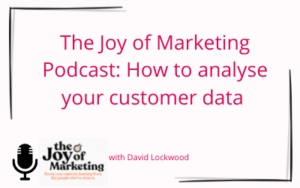The UK’s first post-lockdown Autumn/Winter season has certainly been a mixed bag. ONS figures showed that the retail sector during the final quarter of 2021 grew by 6.2% compared to Q4 2020. Meanwhile, IMRG found that online retail fell by an average of 13%. In this uncharted territory, a number of new challenges have emerged which are prompting retail brands to take a fresh approach.
So, what exactly happened in Q4 2021? What did we learn, and how can we adapt? In our latest Retail Leaders Forum, David Lockwood connected with different multi-channel retailers to share insight and draw some conclusions from the season.
How online retail compared with previous years
The decrease in online retail growth relative to the total sector indicates a swing back to physical retail while pandemic restrictions were eased. Indeed, the average percentage of online retail throughout the last three months of 2021 was down to around 29%, compared with 33-34% in 2020. However, when compared with 2019 at 20%, this still represents a huge shift in consumer behaviour towards online shopping. The good news was that the majority of multi-channel retailers experienced growth, just at a smaller rate than the previous year.
When forecasting, David recommended that brands consider trends over an elongated period, rather than simply comparing 2021 with the year before (which was also different to ‘the norm’). Those who looked at older data from 2017-19, such as the percentage of their existing customer base who placed an order, were able to predict AW21 activity more accurately and therefore fared better during the season.
Contraction of the peak period
Despite the expectation of high sales, many retailers experienced a slump during most of November, apart from Black Friday in the final week which still produced a huge amount of revenue. As a result, some brands are considering whether to reduce marketing spend in November to improve efficiency. However, we have yet to see how this would pan out, since response rates on Black Friday may depend on sustained marketing spend during the run-up to it. David suggested that retailers carry out testing to gauge ROI during the first three weeks of November 2022.
The peak of Christmas sales also shifted significantly. While, historically, this had been moving later by an average of 1.4 days per year, 2021 saw it move 3.5 days later when compared with 2019. For retailers, this manifested as a higher concentration of sales in December. Overall, brands experienced a much more compact and intense Autumn/Winter season than usual, which presented both new opportunities and new challenges.
Lag and retention
At one gifting company, there was concern at board level about the amount of marketing budget invested in November, since the spend resulted in such low sales. During a contracted season, this issue can be tackled by carrying out lag testing to determine the consideration window of your products. From this, you can find the optimum time for marketing spend going forward.
Some brands actually embraced a longer consideration window. One female fashion retailer said they had been reducing discounts and maintaining prices. Whilst they still see about 20% of their sales from last-click attribution, their shoppers’ behaviour moved from taking opportunistic advantage of ‘abandoned basket’ offers, to waiting for a longer time before purchase. This was attributed to a lower sense of urgency, as people were no longer afraid of missing the lowest price.
While customer acquisition declined during the season, the majority of brands saw higher response rates from almost all media channels. Retailers had previously experienced an influx of new customers during 2020, so were able to capitalise on a larger retained customer base to sustain their businesses.
In summary, shopping trends in AW21 were once again different from the behaviour we’ve seen in recent years. But multi-channel retailers who can use their learnings, and start testing in advance, should be in a strong position as they head into AW22. In our next post, we’ll delve into what happened within individual marketing channels, as well as logistical challenges, and how retailers can address them.




